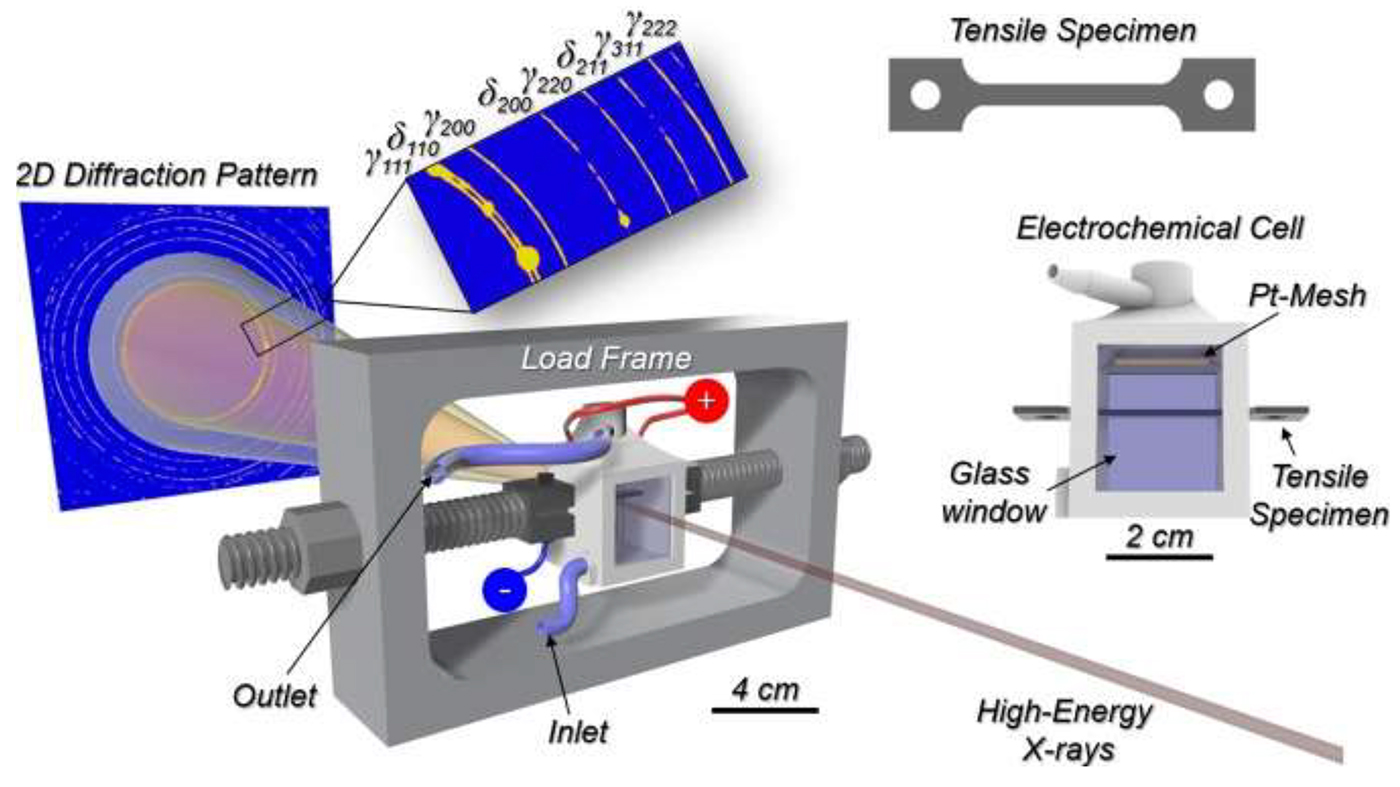Electrochemical cell with tensile load frame
This electrochemical cell within a tensile load frame has been used to study the lattice strain evolution during electrochemical hydrogen charging and mechanical loading of a duplex stainless steel.

Hydrogen embrittlement studies
This electrochemical cell within a tensile load frame was used by Örnek et al. to study the lattice strain evolution during electrochemical hydrogen charging and mechanical loading of a duplex stainless steel. They performed in-situ XRD in order to follow the lattice strain in the austenite and ferrite phases. They also observed differences in the strain partitioning between the two phases.
Experiments were performed at the Swedish Materials Science beamline, P21.2 branch.
Further information
About the sample environement see: Örnek et al. (2020) Corr. Science, Vol. 175, p.108899.
doi.org/10.1016/j.corsci.2020.108899
About this research case:
- C. Örnek, T. Müller, B.M. Şeşen, U. Kivisäkk, F. Zhang, M. Långberg, U. Lienert, A. Jeromin, T.F. Keller, E. Lundgren, J. Pan, Hydrogen-Induced Micro-Strain Evolution in Super Duplex Stainless Steel—Correlative High-Energy X-Ray Diffraction, Electron Backscattered Diffraction, and Digital Image Correlation, Front. Mater. 8 (2022) 793120. doi.org/10.3389/fmats.2021.793120 .
- C. Örnek, T. Müller, U. Kivisäkk, F. Zhang, M. Långberg, U. Lienert, K.-H. Hwang, E. Lundgren, J. Pan, Operando time- and space-resolved high-energy X-ray diffraction measurement to understand hydrogen-microstructure interactions in duplex stainless steel, Corrosion Science. 175 (2020) 108899. doi.org/10.1016/j.corsci.2020.108899 .



